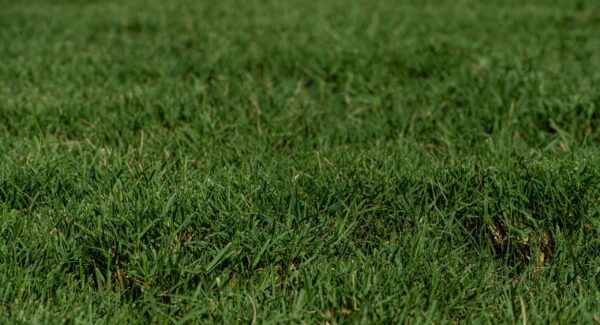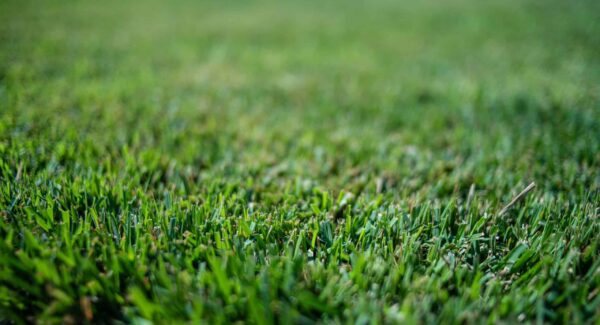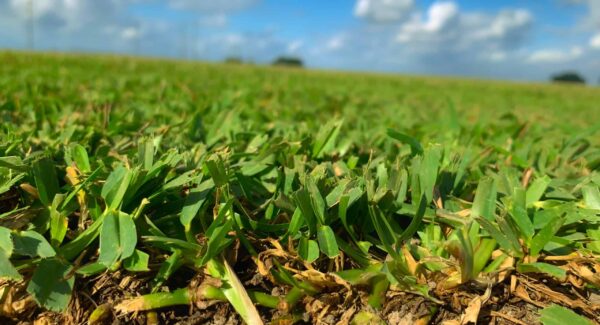7 Low Maintenance Grass Varieties Best For Texas Lawns
Intro
Texas has a diverse climate varying from south to north and east to west, significantly affecting the grass varieties suitable for a yard. Texas has several climate zones, including arid and semi-arid in the west, humid subtropical in the east, and a more temperate climate in the north.
When we say Texas, one of the first associations is hot summers, and indeed, they are in the central and southern parts, where temperatures often exceed 100°F (38°C). High temperatures are more pronounced and last longer in the south compared to the north.
Winters are generally mild but can vary. Northern Texas winters are colder, with occasional snow and temperatures sometimes falling below freezing. Southern Texas, however, enjoys milder winters, with temperatures rarely dropping below 39°F (4°C).
Throughout the year, temperatures range from an average minimum of 30°F (-1°C) in winter to an average maximum of 98°F (36°C) in summer, depending on the region.
When choosing a type of grass for Texas yards, it is essential to consider which climate zone you belong to, the type of soil, the availability of water for irrigation, and the amount of sunlight your yard receives.
Considering that droughts and hot summers are typical for Texas, it is recommended to choose drought-tolerant grass types that do not require large amounts of water and simultaneously result in a healthy green lawn. The resilience of certain grass varieties is also very environmentally beneficial, as it does not consume a lot of resources for watering or reseeding. Also, such varieties do not require frequent fertilization, contributing to household budget savings.
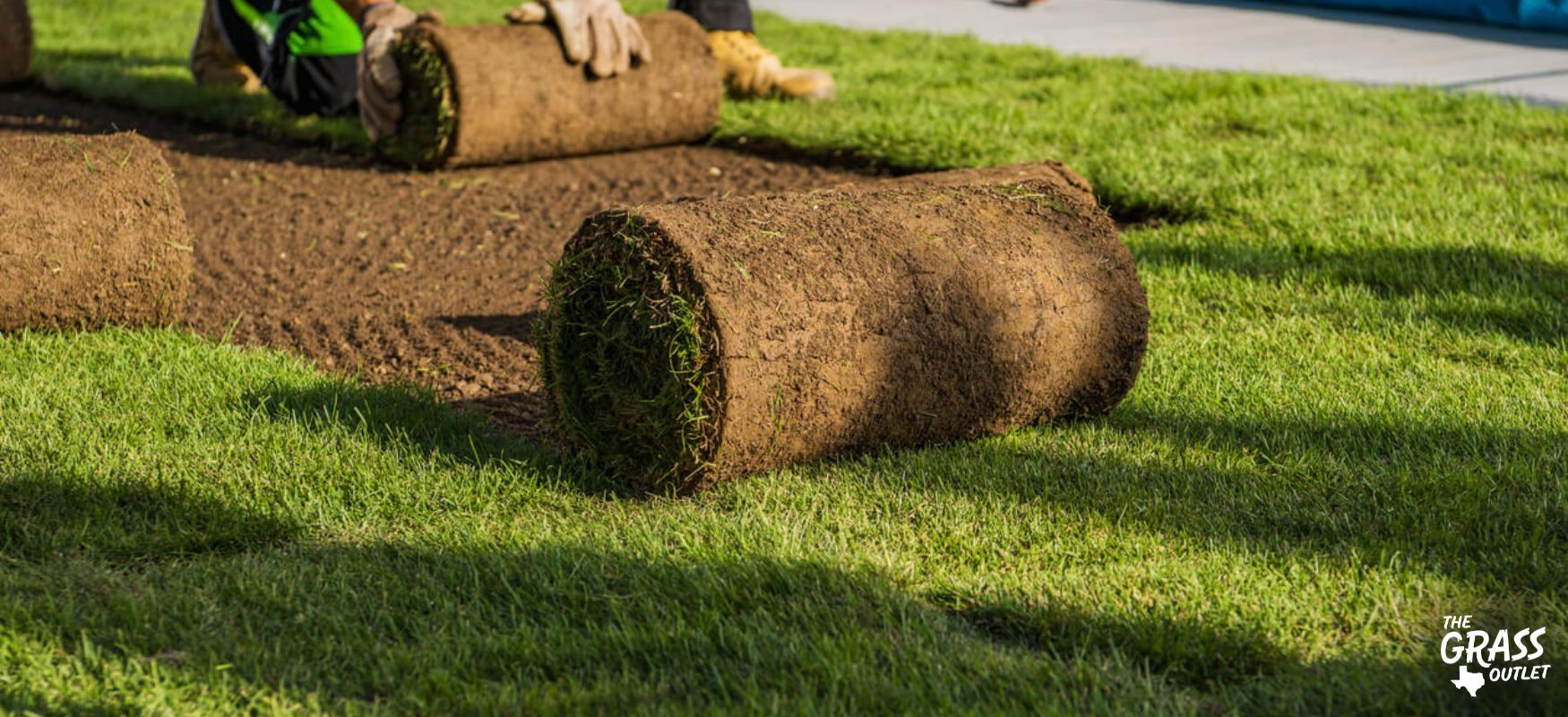
In this text, learn about Bermuda, Zoysia, Buffalo, St. Augustine, Centipede, Ryegrass, and Tall Fescue. You will find out about their characteristics and what care they need to keep your lawn neat and healthy.
Bermuda Grass
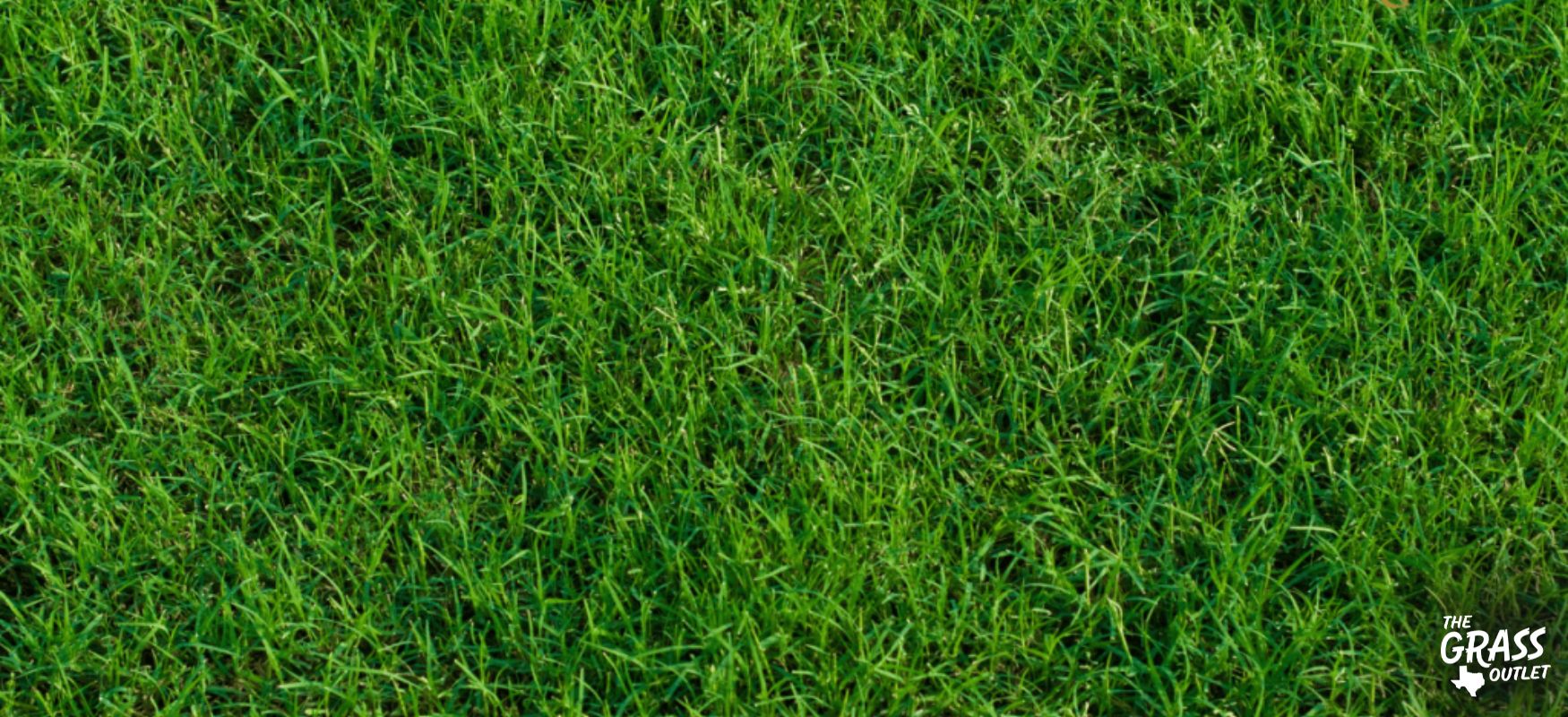
Bermuda grass is a very popular type of grass for lawns in Texas because it is highly resistant to heat and drought and has the strength to form a dense, fine, lush green carpet.
Bermuda belongs to the warm-season grasses and thrives in a wide range of soil types and ecological conditions, making it ideal for many parts of Texas, especially in the central and southern regions where the climate is warmer. The leaves of this grass are short, with a fine texture and a sharp tip at the end. The leaves are distinctly green and grow densely, contributing to the lawn’s full appearance.
The maintenance needs of Bermuda grass:
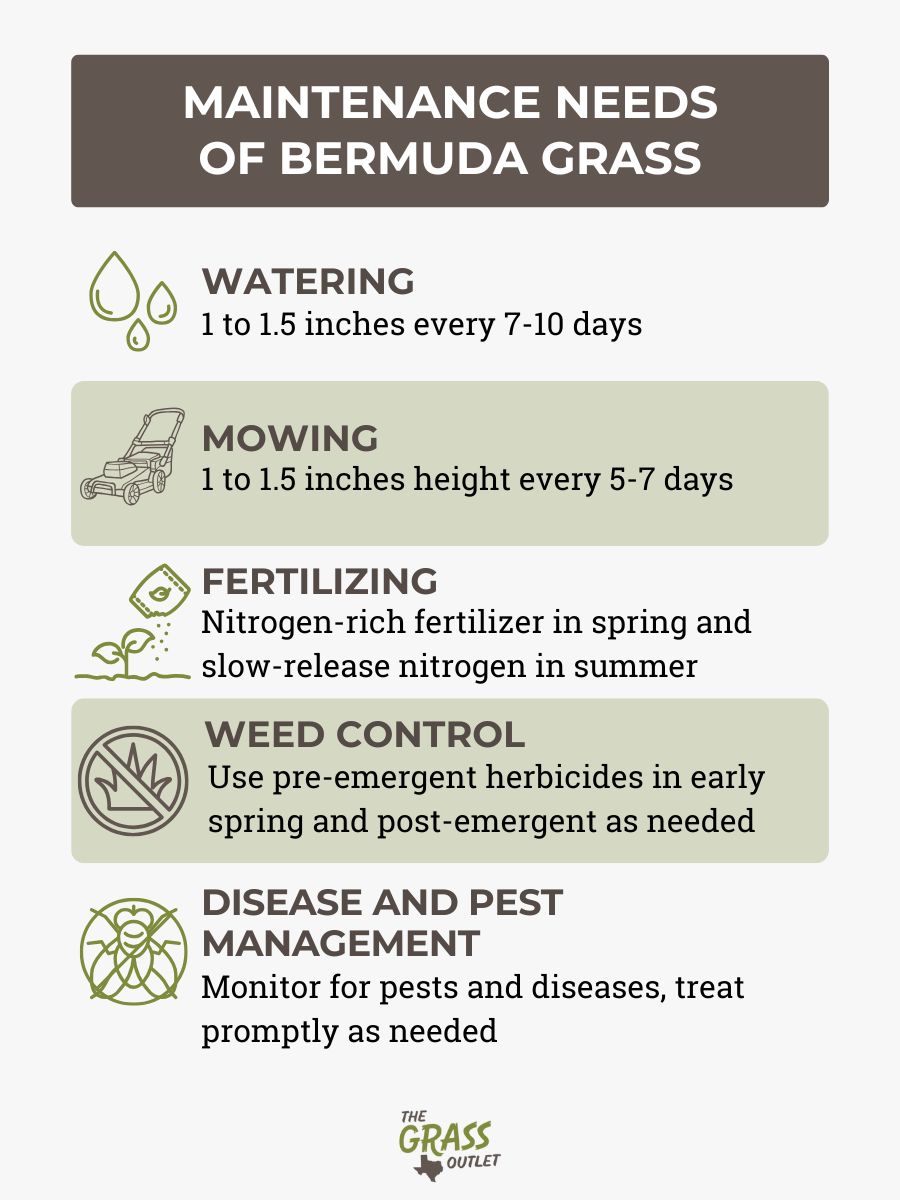
- Watering: Bermuda has a deep root system that helps it survive dry summers. During the active growing season – spring and summer- it usually needs about 1 to 1.5 inches (2.5 to 3.8 cm) of water every 7-10 days, whether from rainfall or irrigation. It is best to water deeply and infrequently to encourage root growth. During autumn and winter dormancy, water needs significantly decrease.
- Mowing: Regular mowing is necessary to keep Bermuda healthy and form a dense lawn. During the active growth phase, you should mow at a height of about 1 to 1.5 inches (2.5 to 3.8 cm) every 5 to 7 days, using a reel mower for a finer cut. It is important not to remove more than one-third of the leaf height in a single mowing to avoid stressing the grass.
- Fertilizing: With the arrival of spring, when the grass starts to green, apply a nitrogen-rich fertilizer and continue during the summer months (using only slow-release nitrogen during excessive heat), spacing applications every 4 to 6 weeks. Bermuda should receive 4 to 6 pounds of nitrogen per 1,000 square feet yearly. Fertilizing during winter is advised against, as it is Bermuda’s dormancy phase.
- Weed control: Applying pre-emergent herbicides in early spring prevents weed seeds from germinating, and post-emergent herbicides are needed to control existing weeds.
- Disease and pest management: Monitor for signs of pests and diseases. Healthy, well-maintained Bermuda grass is less susceptible to problems, but prompt treatment is necessary if issues arise.
Zoysia Grass
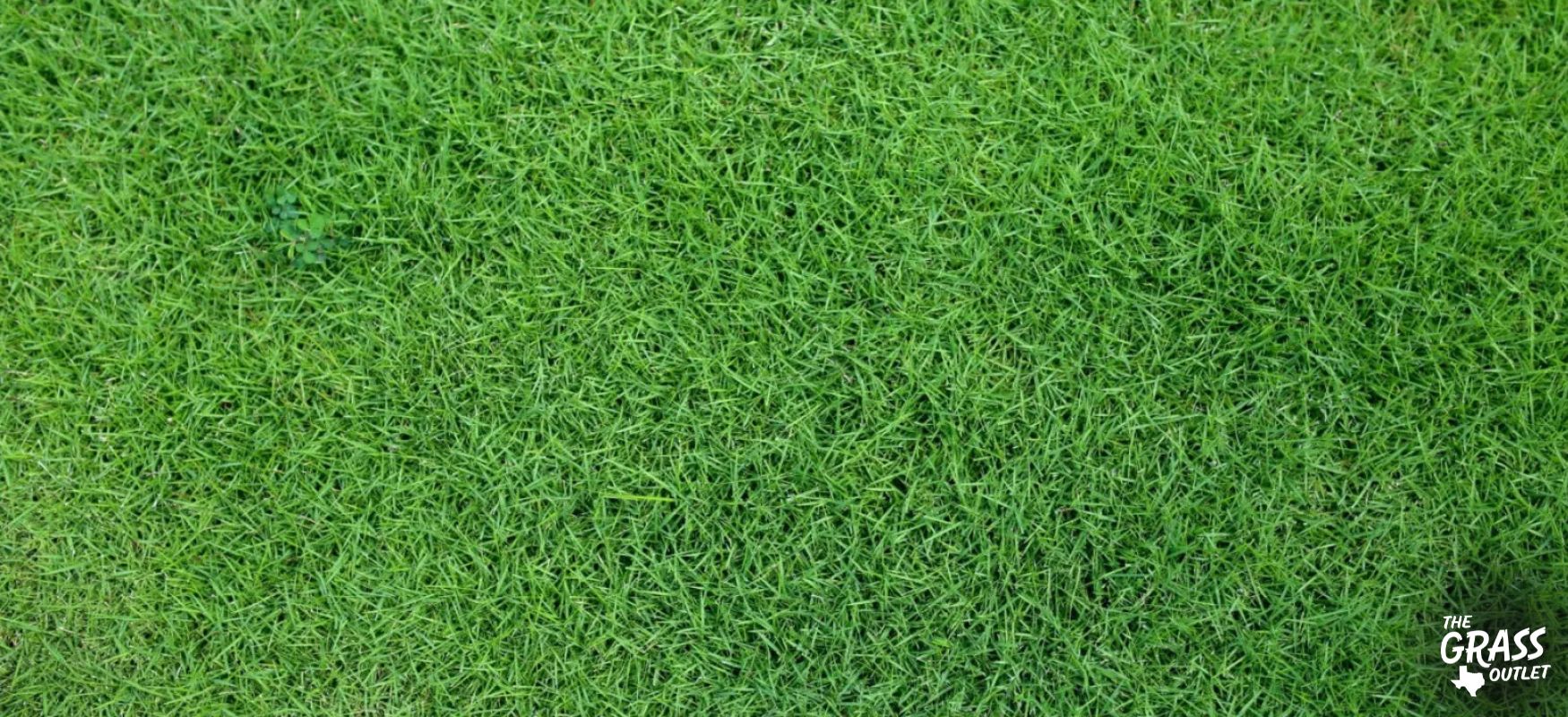
Zoysia grass is also a good choice for lawns in Texas. Its characteristics are drought and heat tolerance, high resistance to pests and diseases, dense growth, and the ability to withstand heavy foot traffic. Like Bermuda, it belongs to the warm-season grasses and establishes well in various soil types, offering a lush, green appearance for most of the year.
Zoysia is suitable for most of Texas, especially in hot summers, and lawns can benefit from its drought resistance. It can be a good choice for residential and commercial landscapes throughout the state.
Zoysia, which includes varieties like Palisades Zoysia and Zeon , is not demanding in terms of maintenance. Once established, it won’t require much effort, making it a smart choice for homeowners looking for a durable and attractive lawn.
The leaves are fine to medium in texture, with a firm, rugged feel. The leaves form a dense carpet that can prevent weed emergence and reduce damage from traffic.
What Zoysia needs and how to care for it:
- Watering: Zoysia is known for its drought resistance, thanks to its deep root system. Immediately after planting, it requires intensive watering to ensure the sod is well established. About 1 to 1.5 inches (2.5 cm) of water every 7-10 days, including rainfall, is needed to keep it lush and green during the growing season.
- Mowing: Since Zoysia grows slowly and densely – Which prevents weed formation – it does not require frequent mowing. Mower blades should be sharp to avoid tearing the grass, which can lead to disease.
- Fertilizing: Fertilize in late spring once it is at least 80% green, using a complete fertilizer that contains nitrogen, phosphorus, and potassium. Avoid over-fertilizing, as Zoysia requires less nitrogen than other grasses.
- Shade tolerance: Zoysia has better shade tolerance than Bermuda grass but performs best in full sun to partial shade. It needs about 3 to 4 hours of direct sunlight daily to thrive. Zoysia will perform well in shaded areas that receive good dappled sunlight through tree canopies or a mix of full and dappled sunlight throughout the day.
St. Augustine Grass
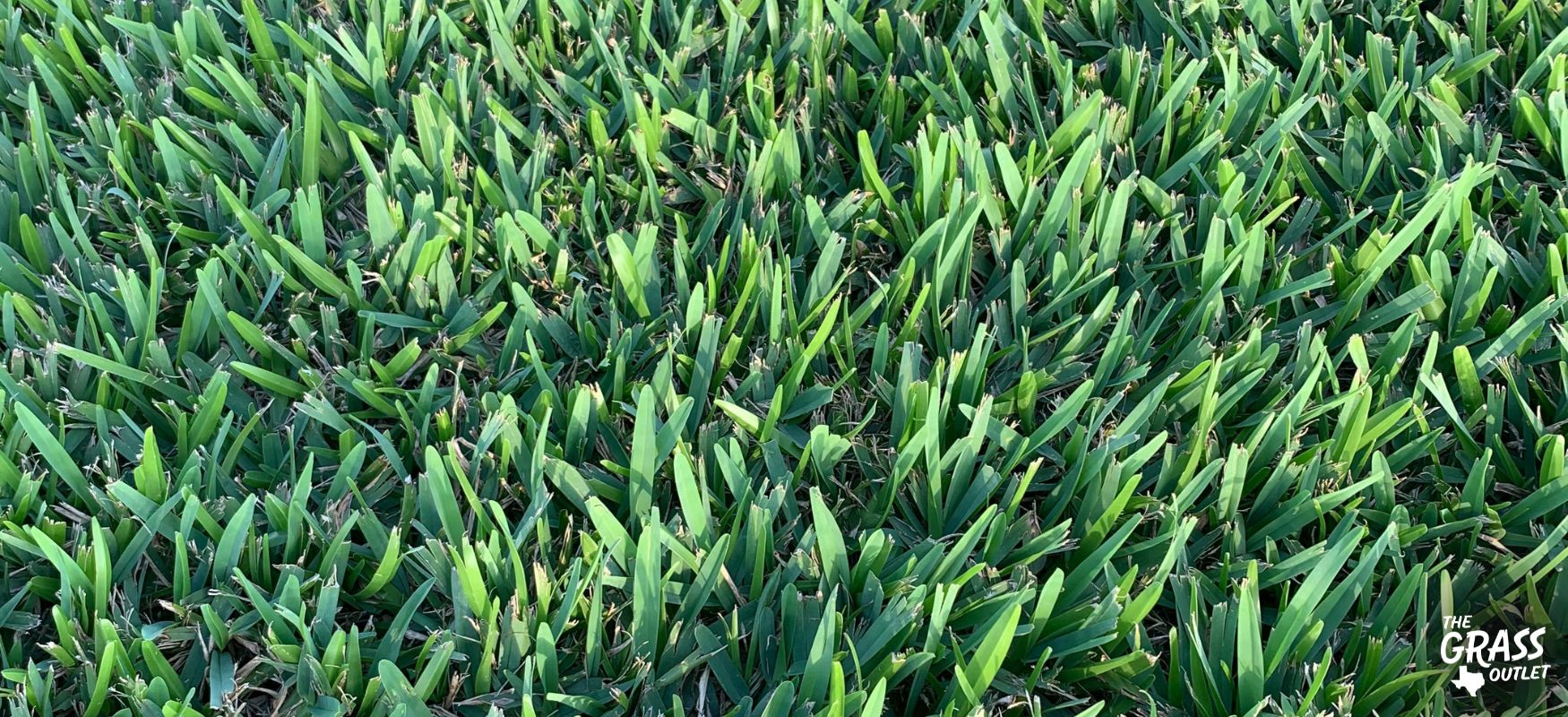
In Texas, St. Augustine grass thrives best in the warm, coastal regions, where it does well in areas with mild winter temperatures and high humidity. It prefers sandy soil and grows well in the sun and shade, making it versatile for different yard conditions.
This grass variety tolerates shade well, especially that of planted trees. However, in order for it to thrive, it requires 4 to 5 hours of direct sunlight daily. In heavily shaded areas, the grass can become sparse and less vibrant.
St. Augustine grass has broad, flat leaves that are usually dark green. The leaves are wider than those of Bermuda or Buffalo grass, giving it a lush, dense appearance. This type of grass can form a thick carpet that is soft underfoot.
What kind of care does St. Augustine grass need?
- Watering: Maintaining a healthy lawn generally requires watering 1 to 2 times a week during the active growth season, depending on the soil type and weather conditions. Deep, infrequent watering encourages deep root growth and improves drought resistance.
- Mowing: You should mow it regularly to a height of 2.5 to 4 inches, depending on the variety and growth conditions. It is important not to cut more than one-third of the leaf height at once to avoid stressing the grass. Regular mowing during the growing season helps maintain a healthy, dense lawn and reduces weed problems.
- Fertilizing: Apply a balanced, slow-release fertilizer in spring, early summer, and late summer to support St. Augustine grass fast growth. Avoid over-fertilizing, as this can lead to excessive growth, thatch buildup, and increased susceptibility to pests and diseases.
Buffalo Grass
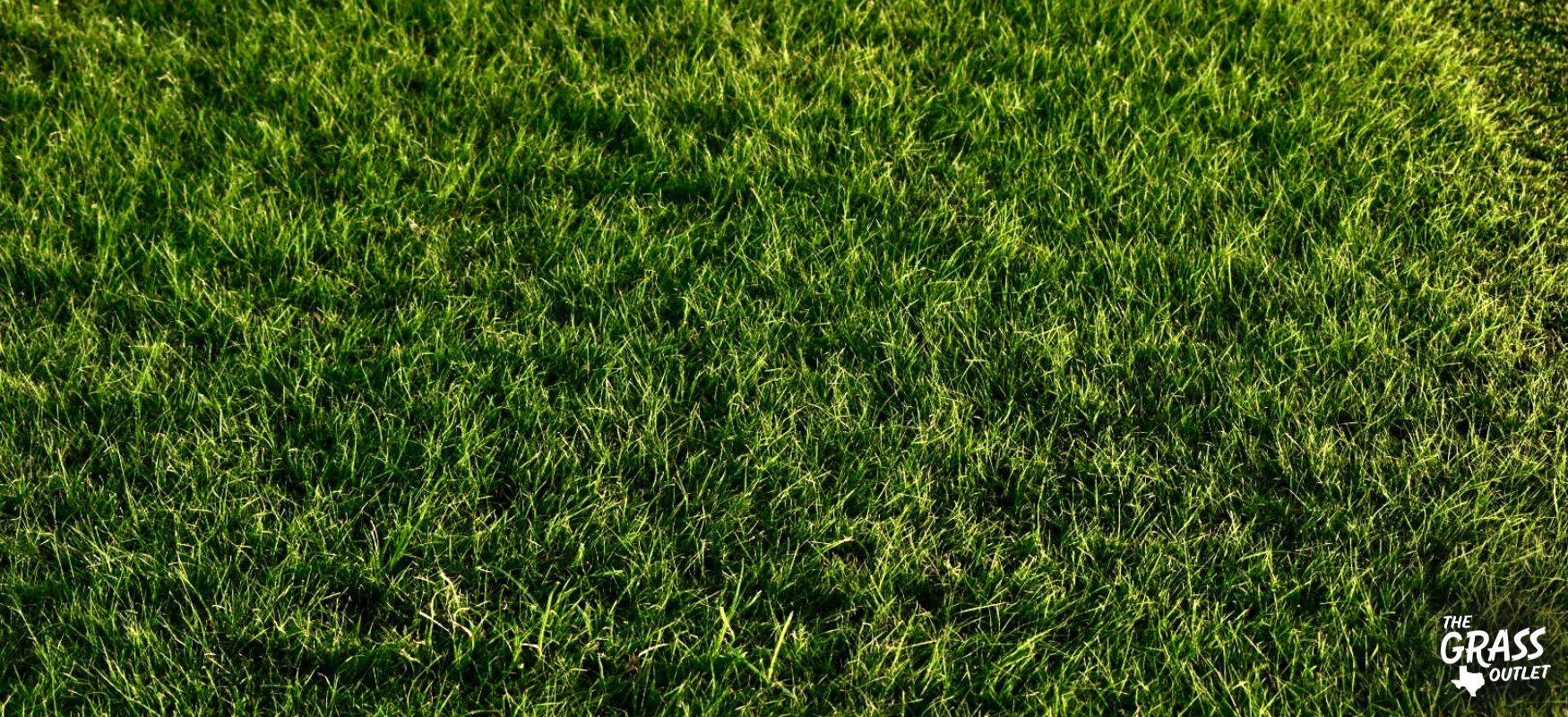
Buffalo grass prefers full sun and does not tolerate shaded areas well. It requires at least 6 to 8 hours of direct sunlight daily to thrive. It is exceptionally drought-resistant, requiring much less water than traditional lawn grasses such as St. Augustine or Bermuda.
It is very low maintenance, and here are its needs:
- Watering: In Texas, where water conservation is often a priority, this grass typically requires watering once every two to three weeks during the hottest parts of summer. It may require even less frequent watering during cooler months or in naturally moist areas.
- Mowing: One of the advantages of Buffalo grass is its growth rate, which reduces the need for regular mowing. During the growing season, mowing every two to three weeks at a height of 2 to 3 inches is usually sufficient.
- Fertilizing: Buffalo grass requires minimal fertilization. Over-fertilizing can lead to excessive growth and potential disease problems.
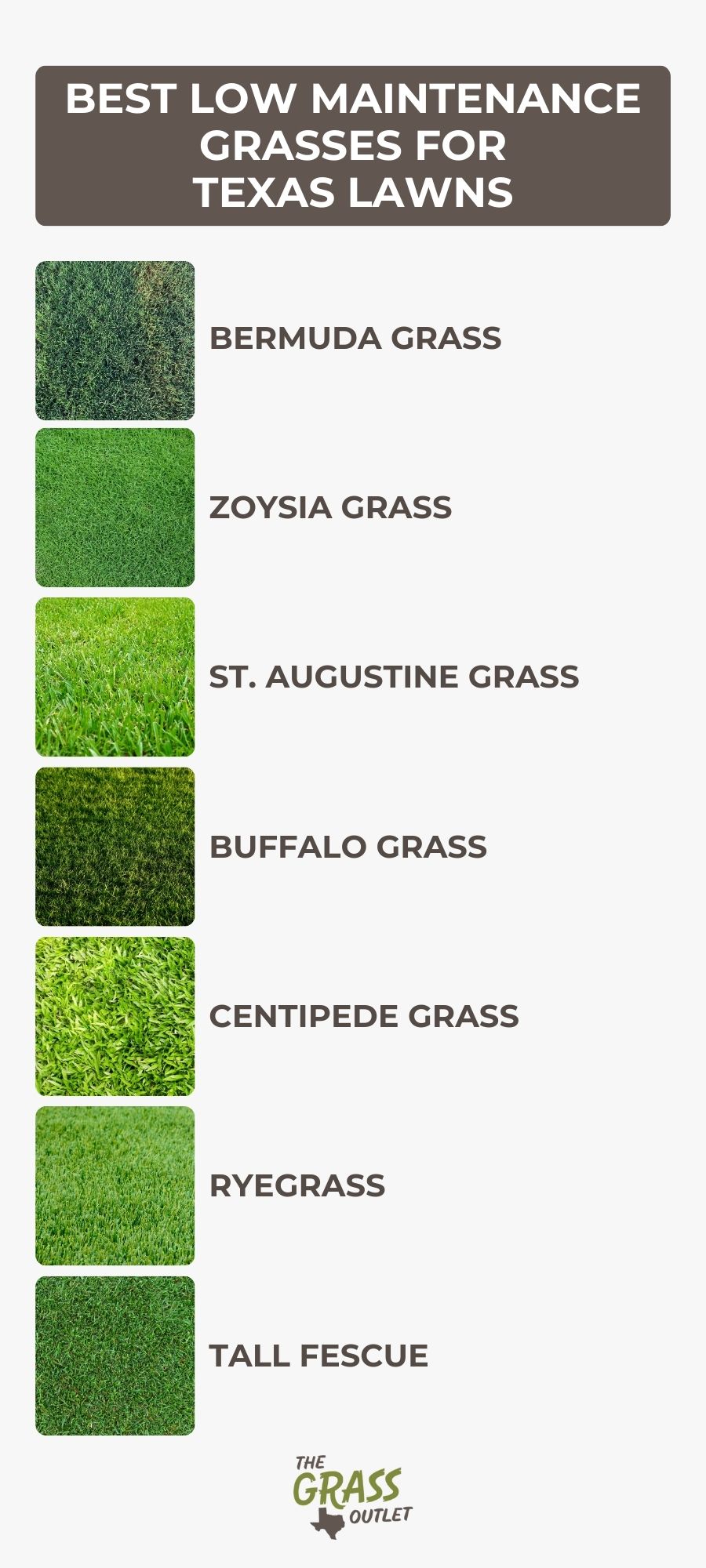
Centipede Grass
Centipede grass requires very little maintenance; the more you work on it, the worse it becomes. Commonly found in southeastern Texas, it grows slowly and enjoys the sun and partially shaded areas.
It grows close to the ground and spreads by producing stolons, making it a good choice for creating a dense, low lawn. It has a medium to coarse texture, with short, upright leaves that are light to medium green in color.
Centipede grass is known for its ability to thrive in acidic, sandy soils where many other types of grass struggle. It’s an excellent choice for homeowners who want a lawn with very low maintenance requirements, and for lawns, you will not trample a lot, as this grass does not tolerate it well. Its requirements for watering and fertilization are minimal.
Ryegrass
This grass germinates and grows quickly, providing lush green coverage in a short period. It is often used for overseeding warm-season lawns in the fall to maintain a green color throughout the winter in milder climates. Known for its fine texture and dense vegetation, Ryegrass grows quickly and has a darker green color.
It flourishes in cooler, moist environments. Autumn and spring in Texas offer the ideal climate for the growth of this grass before the extreme summer heat.
Ryegrass is adaptable to various soil types and climates, making it suitable for many parts of Texas. It is handy in Central and Eastern Texas, where the climate is more moderate, and the soil can support cool-season grasses. In North Texas, it is often used for overseeding warm-season lawns.
Its adaptability decreases as you move towards the warmer, drier regions of West Texas, where water availability and extreme heat can limit its success. It can tolerate drought reasonably well but is less resistant than the abovementioned varieties.
Ryegrass has moderate shade tolerance. It can grow in partially shaded areas but thrives best in full sun to partial shade. Heavy shade can reduce its vigor and density.
What are the maintenance requirements for this grass?
- Watering: Ryegrass requires consistent moisture, especially during germination and early growth stages. Once established, it still requires regular watering but can tolerate short periods of drought.
- Fertilizing: Moderate fertilization is necessary to maintain a healthy, green appearance. It does not need as much fertilizer as some warm-season grasses, but responding to soil test recommendations is crucial.
- Mowing: You should regularly mow it to maintain the optimal height, encouraging dense growth and preventing it from becoming too tall and sparse.
Tall Fescue
Tall Fescue is a perennial cool-season grass valued for its versatility and durability. It is often used for lawns, pastures, and erosion control thanks to its deep root system.
It is known for its coarse texture and deep green color. It forms a dense lawn that can withstand high traffic, making it a popular choice for residential and commercial lawns. Its deep roots make it more drought-resistant than other grass types, helping it stay green during dry periods.
This grass variety is most suitable for the cooler, more temperate regions of Texas, such as the Panhandle and North Texas. It can also thrive in parts of Central Texas where the climate is not excessively hot and dry. However, it may struggle in the southern and western parts of the state, where temperatures are higher and conditions are drier.
It prefers cooler temperatures and can go dormant during the hot Texas summers, especially in the southern regions. It performs best in spring and autumn when temperatures are milder.
Tall Fescue has good shade tolerance compared to many other types of grass. It can grow in partially shaded areas, making it suitable for lawns with varying lighting conditions.
What care does it need?
- Watering: Although Tall Fescue is more drought-resistant than some other grasses, thanks to its deep root system, it still requires regular watering, especially during dry periods, to maintain a lush appearance.
- Fertilizing: It benefits from regular fertilization, especially in spring and fall, to support healthy growth and maintain a vibrant green color.
- Mowing: Mow at a higher height than many other types of grass to help retain moisture and reduce stress, promoting a denser, healthier lawn.
Conclusion
Texas poses challenges regarding the climatic conditions for planting and maintaining lawns, primarily because of its drought-prone and hot summers. However, nature has ensured the availability of grass types that can withstand all challenges and form lush, dense lawns.
When choosing a grass variety, you should be aware of the climatic conditions of your region. For Texas, drought-resistant grasses generally withstand prolonged summer heat and do not require intensive watering, mowing, and fertilization. In a word, grasses that require minimal maintenance.
We hope we have brought this topic closer to you, and if you have any doubts and want to get better acquainted with the challenges of maintaining grass in Texas, feel free to contact The Grass Outlet.
